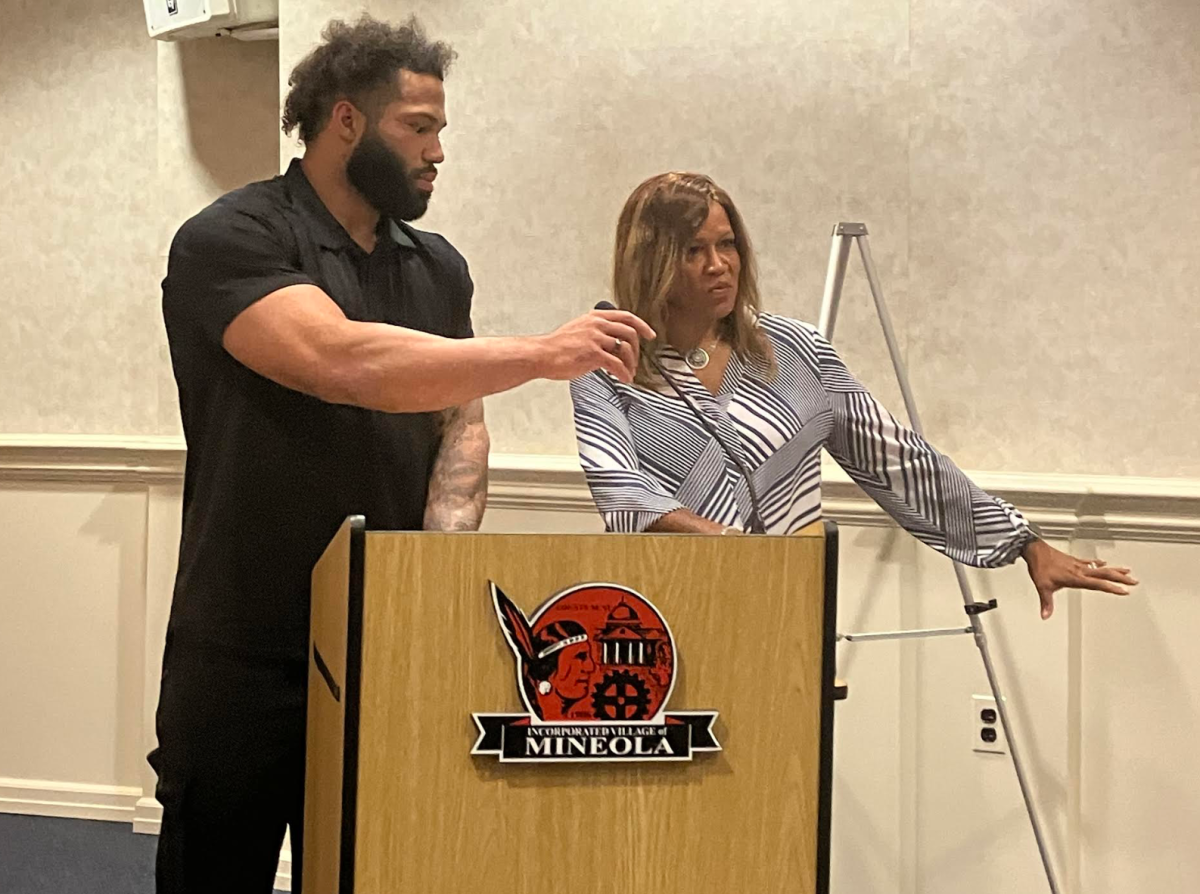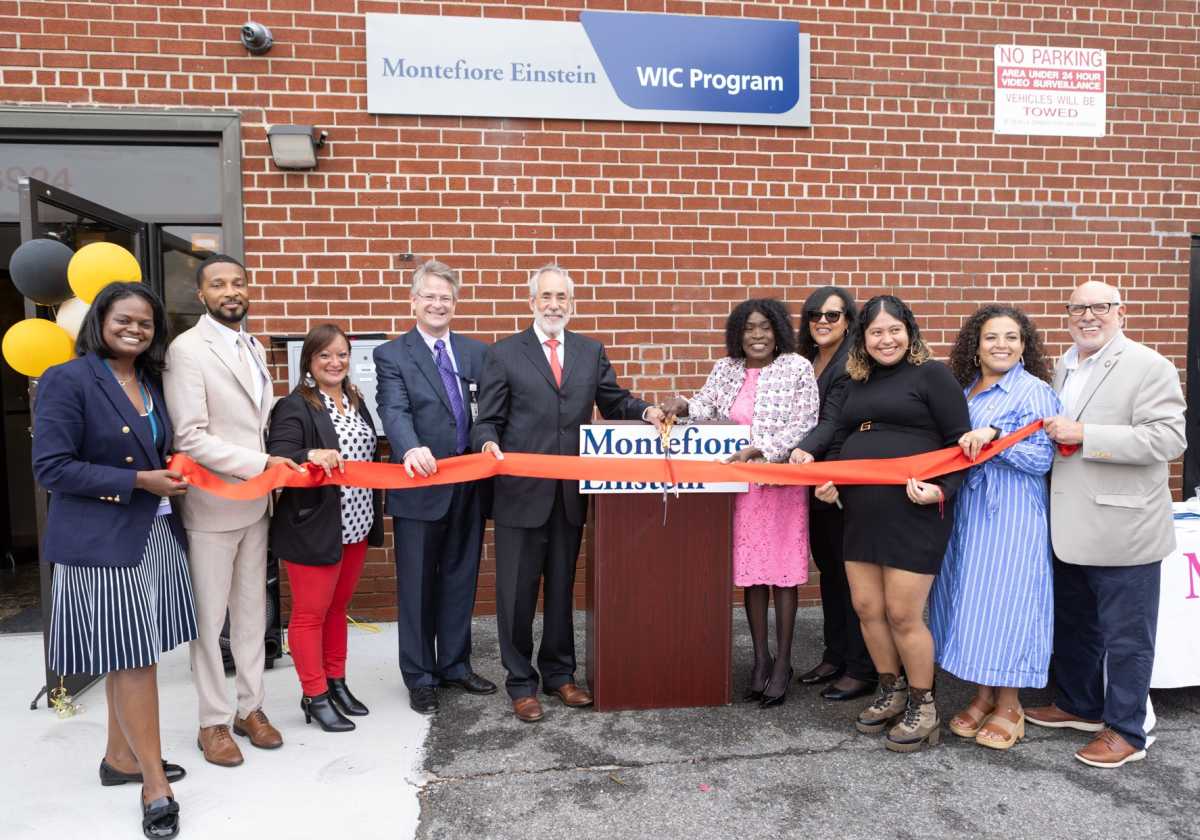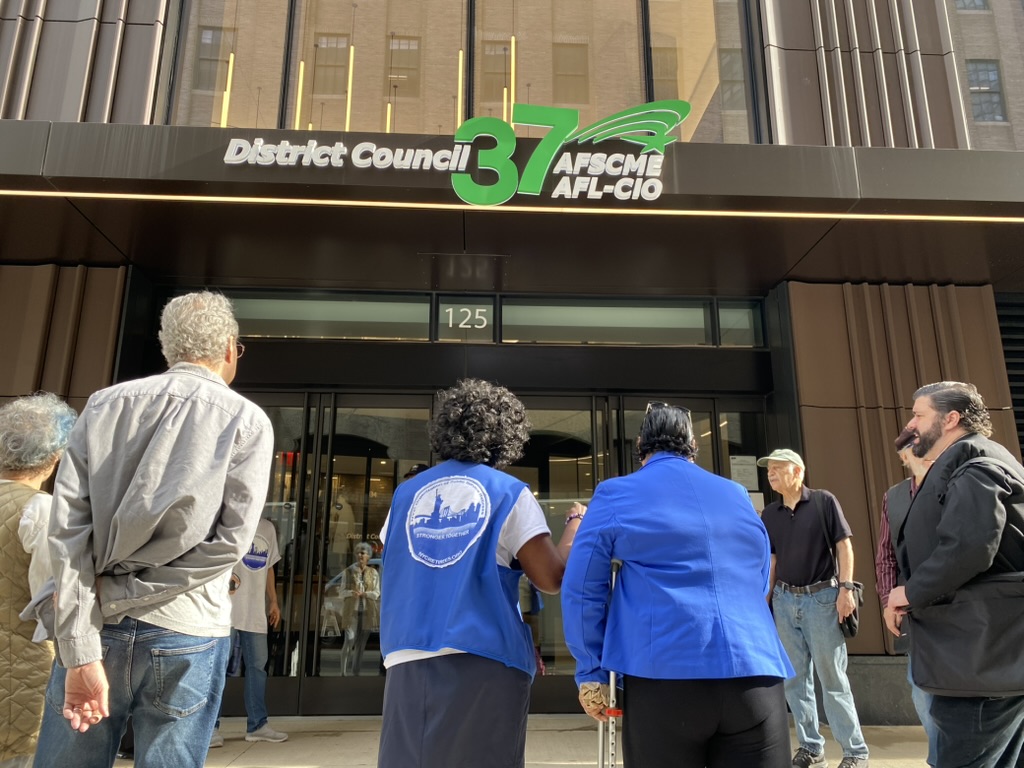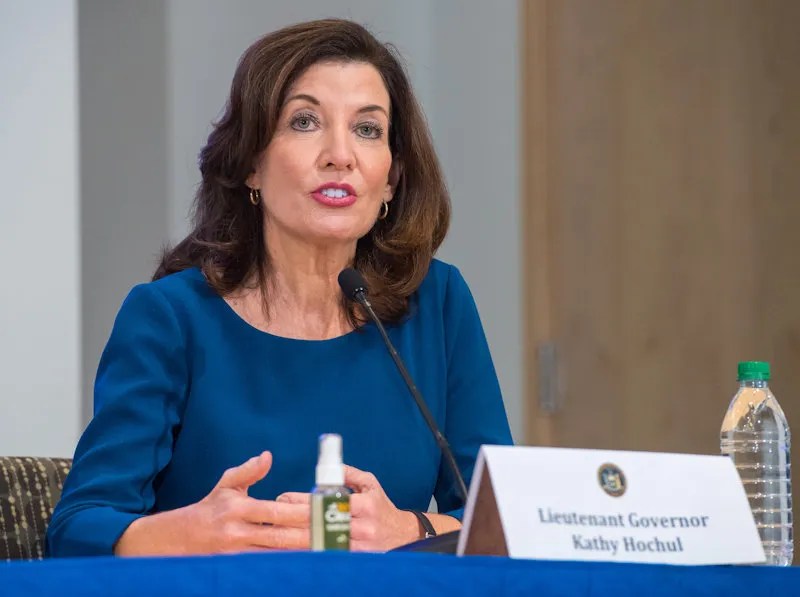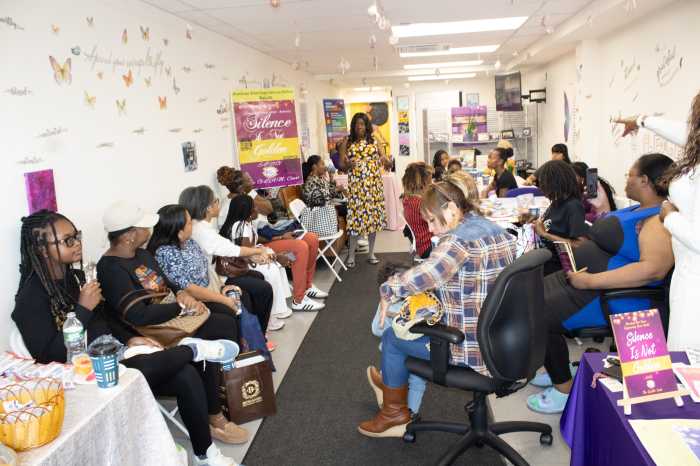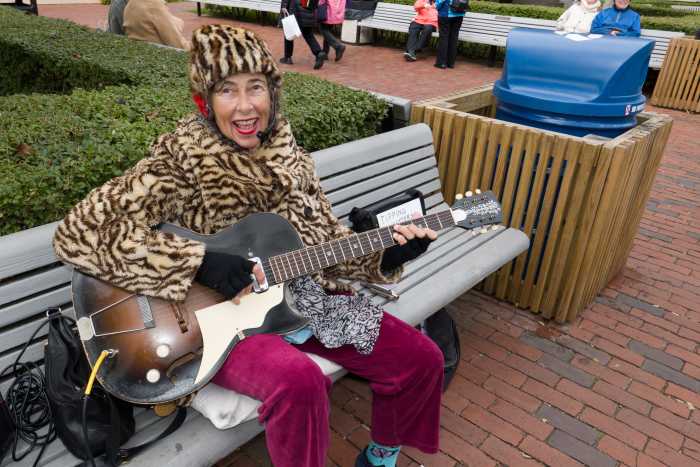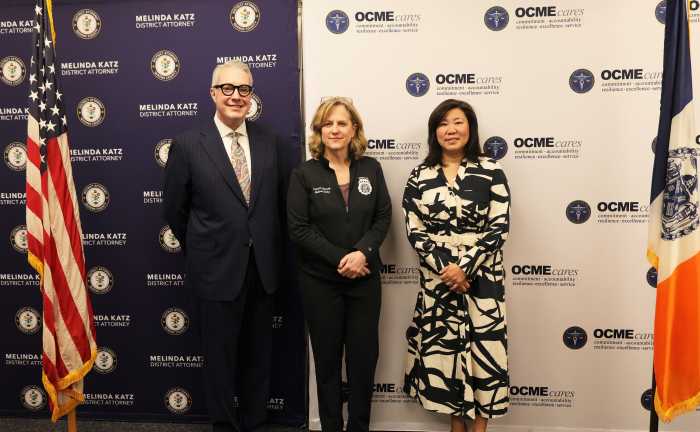Editor’s Note: The following interview was conducted by Our Time Press (OTP), with which Kings County Politics is grateful for having a close relationship. It first appeared on their website and in their weekly printed publication. KCP appreciates their letting KCP post it.
LaRay Brown is President and CEO of One Brooklyn Health System, composed of Brookdale University Hospital Medical Center, Interfaith Medical Center and Kingsbrook Jewish Medical Center.
Our local hospitals are the frontline of defense against the spread of COVID-19, the coronavirus. We [Our Time Press] asked Ms. Brown what is One Brooklyn Health System doing to deal with this virus. Her response below has been edited for space.

LaRay Brown: “We’re doing a myriad of things. First and foremost, we are communicating with our team member, our hospitals, nursing homes and outpatient center staff, giving them the facts about what COVID-19 is.
First and foremost, we have to make sure that our staff is safe and they take all the precautions they need to. We’ve developed an employee travel policy. We strongly discourage any international travel, and particularly to the countries that are the hotspots.
The Employee Health Service must be notified of all travel plans, and if the employee must travel, then upon return they must again contact the Employee Health Service and go through a screening process before being allowed to come back to work. If they do travel to a hotspot country, we will likely ask that they self-quarantine for 14 days, the time it takes for symptoms to develop and the disease is still communicable. Domestic travel is also discouraged.
In terms of operational readiness, we’ve established a task force of staff from throughout One Brooklyn – hospitals, nursing homes, and our ambulatory care settings, to rapidly disseminate best practices. We are getting multiple messaging from local and state health departments and the federal Centers for Disease Control. We are making sure that as we implement policies, we know all the facets of the impact of the policy are considered.
The task force also ensures we maintain an inventory of supplies at appropriate levels.
As we get guidelines from NYC, the state Health Department and the CDC, the task force makes sure we stay on top of all those guidelines. This makes for a constant adjustment of protocols as we put in place new protocols to address the emerging numbers of people who are presenting with symptoms. Because we have people coming in who may have the virus, we have to protect our staff. They are updated on protocols and the type of Personal Protective Equipment (PPE) they should be using and in which settings.
Sometimes the things your grandmother taught you will help in any circumstance. Hand hygiene is one of the biggest safeguards for our personnel and the general population. People should wash their hands for at least 20 seconds using soap, and if not available, a hand sanitizer. We make sure these are available throughout the hospital. When folks are removing PPE, it has to be removed in a certain way, so we are routinely training on how to do that appropriately.
We are training all staff, particularly the environmental services staff, on cleaning of equipment and rooms and adhering to the appropriate environmental and cleaning processes. That, frankly, is no different than what has been used for other viral outbreaks.
Waste-management protocols put up signage everywhere about getting a flu shot. Many of the symptoms of the flu are similar to COVID-19. We’re telling folks to take routine safeguards, not to go into places with largely congregated activities. Not to travel, particularly internationally, and if they’re planning on going on a cruise ship, they might seriously reconsider that.
We’ re impressing on our staff and patients that the greatest vulnerability are the people over 60 with chronic illnesses like diabetes, heart conditions, HIV and other health conditions which make them more likely to be susceptible to the most significant symptoms of the virus.
We’ve put in place visitor policies. Limiting the number of visitors to the inpatient units to two and no one under the age of 18. And they have to first go through a screening process. ‘Have you traveled? Where have you traveled? Are you feverish, coughing, sneezing, are you having trouble breathing?’ If folks answer any of those things in the affirmative, then it is a real caution for our staff that the folks cannot come and visit patients, because we don’t want to put vulnerable and already-hospitalized patients or staff at risk.”
The CDC is now allowing commercial labs to do the coronavirus tests.
OTP: Has the staff been tested? Is the hospital a virus-free zone?
MS. BROWN: I can honestly tell you there is no virus-free zone. We are not testing staff as a matter of course. If a staff person has traveled or are showing symptoms, then we will test. And we’re not the ones making the decision as to who gets tested. Even if the person has traveled and it comes to our attention they are showing symptoms, we have to confirm with the local department of health that we should test.
Even traveling locally in a subway in a densely populated city and borough and they begin to not feel well, we first ask them to call Employee Health. They will go through a screening and will be encouraged to call their private doctor. And not just come in to get tested.
OTP: How does that work?
MS. BROWN: They will be told to stay where they are unless they show symptoms, fever, coughing, sneezing and just feeling out of sorts and having a problem breathing. For the first ones I listed, you could have the flu with all those. But, for perhaps, difficulty breathing – unless you’re an asthmatic and anything that affects your capacity to breathe…
If you have a temperature or are just feeling out of sorts, don’t come to work and self-monitor. Come to an Urgent Center or come to an emergency room. We don’t want people getting so sick that they can’t breathe. They should monitor their temperature.
OTP: This thing is insidious. If they’re sick at home, how do they get to the hospital without infecting others?
MS. BROWN: That’s why, for the most part, people are being told do not go to your doctor’s office and sit next to other people. Do not come to the hospital. Again, unless their symptoms of having problems breathing, they are screened, a mask is put on them and they’re taken to isolation rooms or rooms where there’s a doctor.
The staff is protected with all the necessary protective equipment and the patient is squirreled away as far from other patients as possible, until such time as we go through the DOH on if they should be tested, taking a specimen and then sending it out. If it is confirmed that the person has COVID-19, there are very sophisticated protocols that the local Department of Health is requiring.
If the symptoms are not severe, they’re told to go home and self-quarantine, on what is called a precautionary quarantine, and there are specific things that they have to do. Things like separating yourself from the rest of the family and your pets. Constant hand washing is necessary. Taking liquids is necessary. Not sleeping in the same room as others. So, there are guides and tips for a precautionary quarantine – as compared to people in mandatory quarantine. The list of things gets longer that they must do. Moreover, the daily contact that they have to have with the city’s Department of Health.
OTP: It seems like you have the hospital and your caregiver situation under control. I just keep coming back to the transportation from the home to the hospital. Is there consideration for ambulance transportation or EMT help?
MS. BROWN: In fact, if a person is very sick, they are being transported by EMT ambulance services. One of the issues discussed in the meeting I was just in is that one EMT person had the virus.
We’re going to be reaching out to the ambulance services to get their protocols for the drivers and what we need for them to do as they are transporting a patient to our facilities.
OTP: This is really a full-scale reaction, isn’t it?
MS. BROWN: Some of the frequently asked questions are [about] ‘How serious is COVID-19 compared to the flu? What we don’t want is the general community to be extremely anxious. We do want people to be informed and take commonsense precautions. One thing we don’t want is people flooding emergency rooms if they don’t have to. We tell people you are at greater risk of contracting the flu than COVID-19. At this time, things change daily.
The flu has killed more than 15,000 people in the country so far. That’s why we encourage people to get a flu vaccine. Wash your hands. Don’t put your unwashed hands on your face. Avoid close contact with sick people in general. Avoid being in congested areas. Definitely avoid going on a cruise.
If a person has been in close contact with someone who has been exposed or, in fact, confirmed, that person does not have to get tested. Today, that’s what the CDC, the Centers for Disease Control, is saying, they’re not recommending testing. They are recommending symptom monitoring.
OTP: Without mass testing, how would you know how prevalent it is?
MS. BROWN: What I’ve read and what the experts have been saying, is that coronaviruses have been around a long time. And there is a large family of viruses that cause illnesses that are in that coronavirus family. The COVID-19 is the newest, the “novel” virus, but in general, in most, [cases], even of COVID-19, people have mild symptoms. The individuals who are most severely impacted are older individuals with chronic health conditions that create greater vulnerability, people in nursing homes as one example. Because it is a respiratory virus that can be spread with droplets, coughing, sneezing, nasal discharge from the affected person, that’s why the hygiene suggestions are being really emphasized.
To test everybody, or even everyone with symptoms, I think – I know – we’d quickly run out of the supplies. I know you’re covering that the governor, the mayor, are all demanding the federal government make more test kits available.
OTP: Was there something you wanted to add?
MS. BROWN: I appreciate that we have so many committed staff. From the doctors to the dietary workers, the environmental services workers who are continuing to work every single day. Understanding and wanting to be informed about the virus, understanding what the risks are, understanding what we are doing to minimize their exposure, following the rules to minimize their exposure, but still committed very much to serving people coming in who are sick. Protecting both themselves and patients from being exposed.



